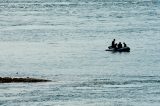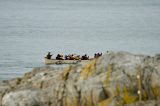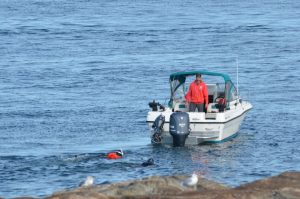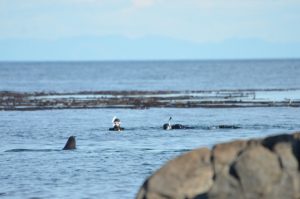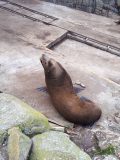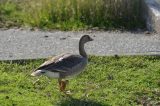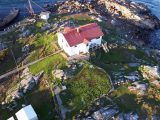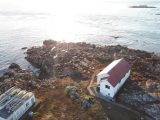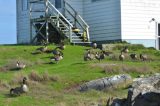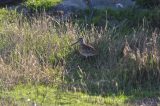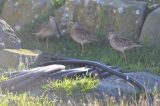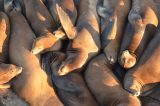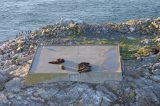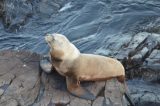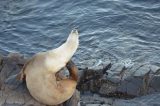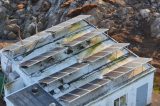Wind: yesterday 12-35 knots from W, today 2-28 knots from N to S to W
Sea State: yesterday rough with chop up to 1 m, today calm until turning rough in evening
Visibility: both days 10-15 NM
Sky: yesterday partly cloudy, today clear turning overcast in late afternoon
Temperature: yesterday 6-7 °C, today 4-7 °C
Atmospheric CO2: 414.12 ppm (recorded by NOAA at Mauna Loa Observatory, Hawaii)
Routine tasks were done over the weekend: making water with the desalinator, tidying the Tank Shed, refuelling the generator and writing the month end report.
The elephant seals rested on land for most of the weekend. The youngest female pup joined the oldest male pup on the boardwalk by the jetty.
There was more than the usual amount of self-propelled activity in the ecological reserve today. This morning, a group of five people spent two hours snorkelling at various spots around the main island. One person spotted in the small inflatable boat, while the other four snorkelled in pairs. This afternoon, two big canoes with 12 people each paddled by. They might have paddled around the island, but I only noticed them passing north through Middle Channel.
No boats were around yesterday, due to the rough seas. Today, other than the boats mentioned above, there were four tour boats and one pleasure boat.
- Colourful Leap Day sunset
- Snorkellers getting back into their boat near the South Islands
- Big canoe in Middle Channel


